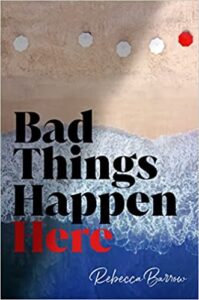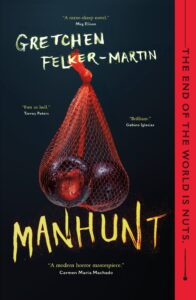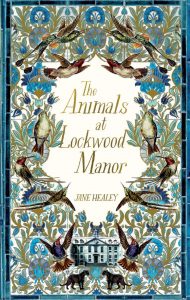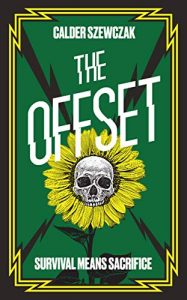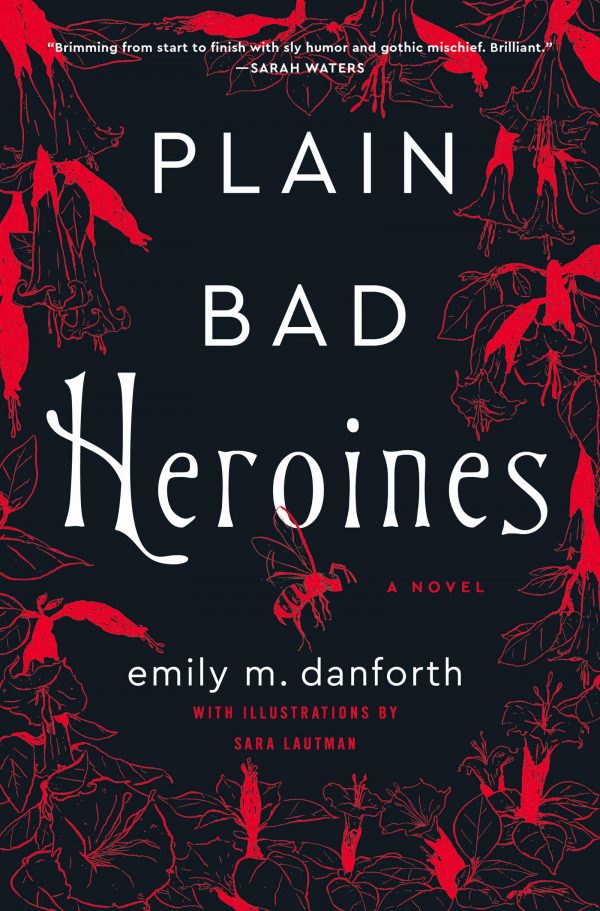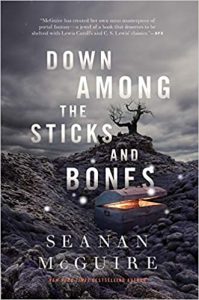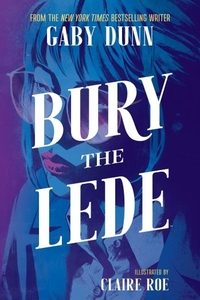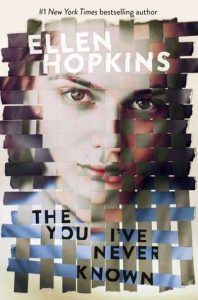Amazon Affiliate Link | Bookshop.org Affiliate Link
One of my favourite YA books is This is What it Feels Like by Rebecca Barrow, so when I saw Barrow was coming out with another sapphic YA title, I knew I had to pick it up. But while This Is What It Feels Like is a heartwarming slice-of-life story, Bad Things Happen Here is a sun-drenched murder mystery about the dark side of a postcard-perfect island getaway.
Luca lives in Parris, a wealthy island town that looks like paradise, but has a long history of mysterious deaths of young women, including Luca’s best friend, who was found dead several years ago. The inhabitants of Parris explain away these deaths with campfire stories of Parris being cursed — but really, they seem to believe, it’s just a series of unrelated coincidences. Luca, though, believes in the curse. And she feels it creeping up on her.
That feeling only intensifies when she returns home one day to find a police car outside her house. Her sister, Whitney, is the latest victim of the curse, and she appears to have been murdered. Luca can’t trust the police to find out the truth, so she’s determined to do it herself — not just for her sister’s sake, but also to try to find a way to escape facing a similar fate. As she starts digging, she finds that the rot in Parris spreads further than she could have imagined, and that everyone in her life is keeping secrets.
This is a mystery in two parts: one is the murder mystery of what happened to Whitney specifically, while the other is about what’s going on in Parris in general. I think some people will find them ending frustrating because (Vague spoilers:) one of these mysteries gets a neat, satisfying puzzle conclusion, while the other is messier. To me, though, that was a positive: I think it perfectly fit the story Barrow was trying to tell, and although it wasn’t satisfying in terms of everything slotting neatly into place, it did complete Luca’s story in a satisfying way. (End of spoilers.)
Luca is an interesting character, especially contrasted with her former friend, Jada. Luca, Jada, and Polly used to all be best friends, until Polly’s death. But while Luca doesn’t fit in on Parris because she’s fat, Black, queer, and mentally ill, she’s also very wealthy, and she is often classist towards Jada, who is from one of the few middle class families on the island. Polly and Luca even used to secretly hang out just the two of them when they didn’t want to be dragged down by Jada not having the same amount of spending money as they had. Although Jada isn’t a very prominent side character, I found this dynamic added a lot of depth: both Jada and Luca resent each other for not seeing their realities, and they’re both dismissive of each other’s grievances.
I do want to give a very big content warning for self harm for this title, speaking of Luca’s mental health. It comes up frequently throughout the novel, along with her suicide ideation.
In some ways, this is a great summer read: it is set on an island in the summer, and the rich people murder mystery has lots of reveals and drama. On the other hand, this is a dark read that’s equally about Luca’s isolation and pain. It’s also a novel about the inescapable horrors of wealth inequality and the obscene power that a tiny fraction of the population holds.
This is a very different read from This Is What It Feels Like, but it’s no less captivating, and I appreciate how Barrow weaves in broader societal issues into her novels. I also admire an author willing to subvert audience expectations, even when it might frustrate some readers, when it’s in service to the story. I’m definitely interested in what she writes next!

